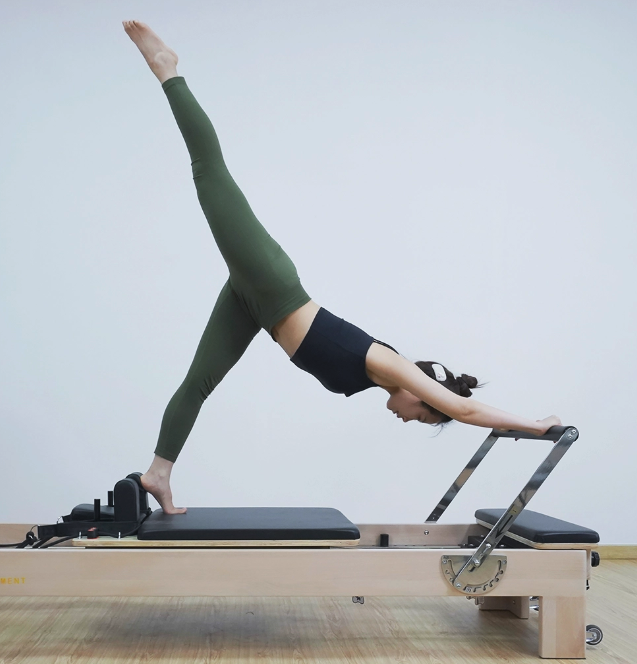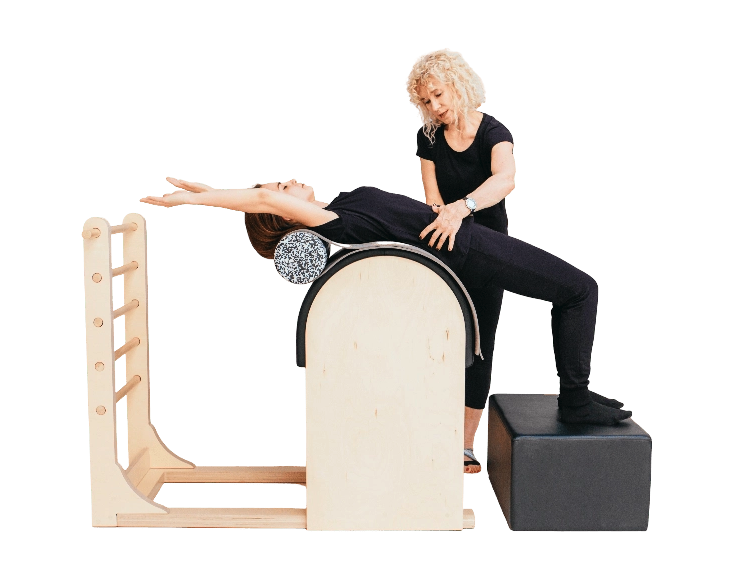T: +86-150-0640-1267
E: susan.liu@jnsenya.com
E: susan.liu@jnsenya.com
Room 708, Y1, Wanda Apartment, No.57 Gongye South Road, Jinan, China (shandong) Pilot Free Trade Zone
Views: 0 Author: Site Editor Publish Time: 2025-09-19 Origin: Site











It feels like everyone is talking about Pilates lately. From celebrities to your local gym friends, people rave about its benefits. Pilates is known for flexibility, strength, and stress relief. But is Pilates actually good for weight loss? Let’s break it down step by step.
Pilates can support weight management, but it works differently from cardio. Weight loss depends on creating a calorie deficit. That means burning more energy than you eat. Cardio like running or swimming burns calories quickly. Pilates burns fewer, but it helps in other ways.
It improves muscle tone and posture. It lowers stress levels, which can stop emotional eating. It builds core strength, so cardio workouts feel easier. For many people, Pilates is not the main fat-burning tool. But it’s an effective piece of the bigger picture.
Any movement burns calories. Pilates does too, though at a lower rate than cycling or HIIT. The number depends on class type, effort, and body size.
Here’s an estimate for a person weighing 150 lbs:
| Pilates Type | 30 minutes | 60 minutes |
|---|---|---|
| Mat Pilates | ~107 kcal | ~214 kcal |
| Reformer Pilates | ~130 kcal | ~260 kcal |
| Advanced fast-paced | ~175 kcal | ~350 kcal |
Some classes move slowly, focusing on control. Others keep you moving nonstop. Higher intensity means more energy burned. People with more body mass usually burn more calories too.

Body composition is a critical measure of health that refers to the proportion of fat and lean muscle mass in your body. Unlike the number on the scale, which can be influenced by factors like water weight, body composition gives a more accurate picture of your overall fitness and metabolic health.
Pilates exercises are designed to strengthen the core, improve flexibility, and enhance muscle balance. By building lean muscle, Pilates can help change body composition over time, leading to a more toned and fit appearance.
The increase in muscle mass that comes with Pilates can boost your resting metabolic rate, as muscles burn more calories than fat at rest. This metabolic boost can aid in weight management and support weight loss efforts.
Studies have shown that regular Pilates practice can lead to a reduction in waist circumference and body fat percentage. This suggests that Pilates is an effective exercise for improving body composition and supporting fat loss.
It’s a myth that you can target fat loss in one spot. Pilates cannot melt fat from only the belly or thighs. What it does is improve overall strength, posture, and muscle balance. As you lose weight, the body sheds fat more evenly. Using a pilates reformer takes this process further. The added springs and resistance challenge muscles in new ways. Core, legs, and arms work together, creating lean tone across the entire body. Over time, reformer training supports steady fat loss and helps shape a more balanced physique.
Mat Pilates is an excellent starting point for beginners, focusing on body weight exercises that build core strength and flexibility. However, it may not provide the same calorie burn as equipment-based Pilates.
Hybrid classes combine Pilates with other forms of exercise like cardio or HIIT, offering a dynamic workout that burns more calories while building strength and endurance.
For weight loss, reformer or hybrid classes may be the most effective due to their higher intensity and calorie burn. However, the best type of Pilates for you will depend on your fitness level, goals, and personal preferences.
Research suggests that engaging in three Pilates sessions per week can yield significant benefits for weight loss and body composition. This frequency can help establish a consistent exercise routine and track progress over time.
Beginners can start with one or two sessions per week and gradually increase the frequency as they become more comfortable with the exercises and build their strength and flexibility.
Aim for 2–4 Pilates sessions weekly to see progress in body composition and weight loss.
Incorporate cardio workouts to increase calorie burn and improve cardiovascular health.
Keep Pilates sessions to 45–60 minutes for optimal results.
Focus on consistency rather than intensity to build a regular exercise habit.
Consistency is key when it comes to weight loss and improving body composition. Even a few shorter Pilates sessions can help build healthy habits that support your weight loss goals and overall well-being.
Running burns more calories per minute. A 30-minute jog can double the burn of a Pilates class. But running repeats the same motion, which can stress joints. Pilates strengthens muscles that support running. Doing both is ideal.
Both focus on mind-body connection. Yoga emphasizes stretching and relaxation. Pilates emphasizes strength and control. Calorie burn is similar for gentle classes, but dynamic Pilates may burn more.
Traditional weightlifting increases muscle mass faster. It often burns more energy during and after workouts. Pilates complements it by improving flexibility and posture, reducing injury risk.
While Pilates is known for its physical benefits, such as building strength and flexibility, it also offers indirect ways to support weight loss that can significantly impact your lifestyle and overall health.
Stress is often linked to weight gain, particularly around the abdominal area. High stress levels can lead to increased cortisol production, a hormone that is associated with fat storage and increased appetite. Pilates is a mindful practice that encourages focus on the present moment and controlled breathing. This can help reduce stress levels, which in turn can lower cortisol production. By managing stress through Pilates, you may find it easier to control your appetite and make healthier food choices.
Poor sleep quality or insufficient sleep can disrupt your metabolism and lead to weight gain. Sleep deprivation can increase ghrelin (the hunger hormone) and decrease leptin (the satiety hormone), which can result in increased appetite and reduced feelings of fullness. Regular Pilates practice can help improve sleep quality by reducing stress and tension in the body. The relaxation techniques and deep breathing exercises often incorporated into Pilates can prepare your body for restful sleep, which is crucial for maintaining a healthy metabolism.
Pilates emphasizes being present and aware of your body’s movements and sensations. This mindfulness can extend beyond the workout and into your daily life, including your eating habits. By practicing mindfulness, you may become more aware of your hunger cues and be better equipped to distinguish between physical hunger and emotional cravings. This can help reduce emotional eating and overeating, which are common obstacles in weight loss journeys.
Feeling confident in your body and abilities can motivate you to stick with your workout routine. Pilates can help improve body image by toning muscles and improving posture, which can lead to increased self-esteem. Confidence can also make you more likely to maintain a consistent workout schedule. When you feel good about your progress and capabilities, you’re more likely to continue with your Pilates practice, which is essential for long-term weight management.

Exercise is only one part of the equation. What you eat plays an even bigger role.
Focus on whole foods: lean proteins, vegetables, fruits, whole grains.
Maintain a slight calorie deficit, but avoid extreme diets.
Drink enough water throughout the day.
Sleep 7–9 hours each night.
Manage stress with breathing exercises or meditation.
Together with Pilates, these habits create sustainable weight loss.
It reduces total body fat. Some of that comes from the waist, but you can’t spot-reduce.
Unlikely. It works best combined with cardio and healthy eating.
Yes, but intensity should vary. Mix harder days with gentle recovery sessions.
Some people notice strength and posture changes within 4–6 weeks. Fat loss may take longer.
They’re close, but dynamic Pilates usually wins for calorie burn.
Pilates is not the fastest calorie-burning workout. Still, it supports fat loss by building muscle, improving posture, and boosting mindfulness. When paired with cardio exercise and balanced nutrition, Pilates becomes a powerful part of any weight-loss strategy.
At Jinan Senya Equipment Co., Ltd, we believe in supporting healthy, balanced lifestyles. Just as our precision equipment is built for strength, stability, and performance, Pilates helps your body achieve the same goals. Both require commitment and quality — the keys to lasting success.